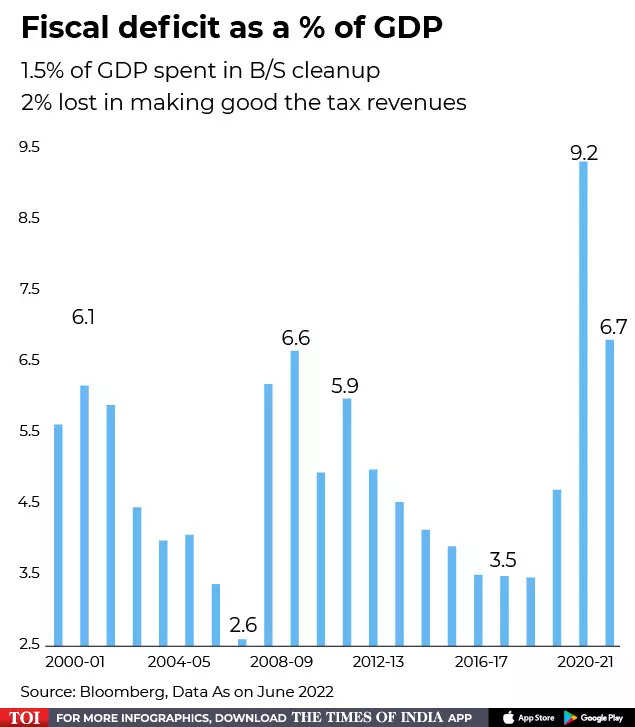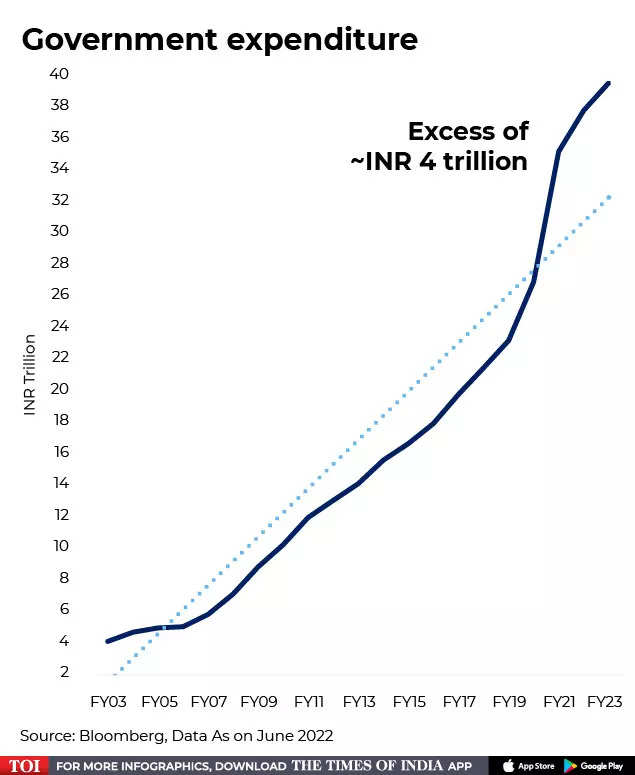
NEW DELHI: The Centre’s capex outlay is estimated at Rs 7.5 trillion in FY23,up from Rs 6.02 lakh crore in FY22, in order to drive economic revival. Of this, Rs 1 trillion will go to states as a long-term, interest-free loan.
Capital expenditure is the money spent by the government on the development of machinery, equipment, building, health facilities, education, etc. It also includes the expenditure incurred on acquiring fixed assets like land and investment by the government that gives profits or dividends in future. An example of capital expenditure is money spent on Indian Railways or building national highways and roads.
According to Finance Minister Nirmala Sitharaman, a thrust on capital expenditure will ease supply-chain bottlenecks and revive demand.
Government spending in the 2022/23 budget included a substantial pick-up in spending on infrastructure. Effective capital expenditure is budgeted at 27% above the revised 2021/22 estimates. The government aims to achieve about Rs 4.45 lakh crore, which is 60% of the annual target, by the September quarter.


“There is an excess Rs 4 trillion government expenditure over and above the long term trend. In the last two financial years most of this expenditure was utilized in paying higher subsidies & general government expenditure because Govt. revenues were not growing. But in FY23, the income tax collection is running above average, indirect taxes like GST have improved and government is likely to meet its disinvestment target,” noted DSP in a research report.
This means excess expenditure in FY23 and till FY25 can act as a economic stimulant to support growth.
GST collections were up 56% to over Rs 1.44 lakh crore in June. In May, the GST collection number was at Rs 1,40,885 crore, an increase of 44% year-on-year.
“The high GST collections, which leads to a new monthly normal of Rs 1.4 trillion during Q1 of FY23, comes on the heels of several macro economic parameters being on the upswing. Since this comes in the backdrop of the guaranteed compensation to states coming to an end, it would assuage many states who were worried about their revenue mobilization ability in the post cess period,” said MS Mani, Partner, Deloitte India on June GST collections.
Net direct tax collections for the current fiscal year surged 45 per cent to Rs 3.39 trillion between April 1 and June 16, compared to Rs 2.33 trillion in the same period a year ago. Advance tax collections for the first quarter of this fiscal stood at over Rs 1.01 trillion against Rs 75,783 crore in the corresponding period last fiscal.
Meanwhile the government has lined up over half-a-dozen companies for strategic sale, including Shipping Corporation of India, CONCOR, Vizag Steel, IDBI Bank, Nagarnar Steel Plant of NMDC and HLL Lifecare. So far in the current fiscal year, the government has mopped up over Rs 24,000 crore from disinvestments, including the public listing of LIC. The target for the full year has been set at Rs 65,000 crore.